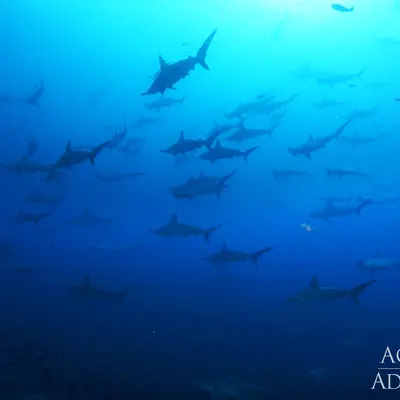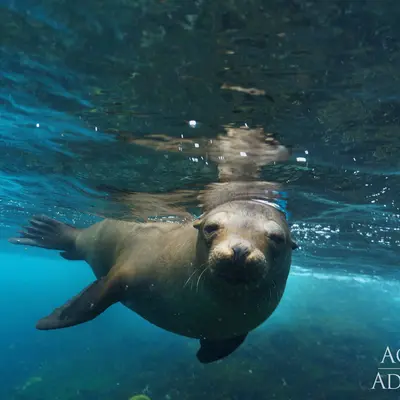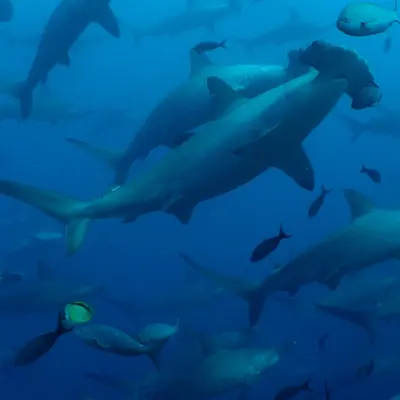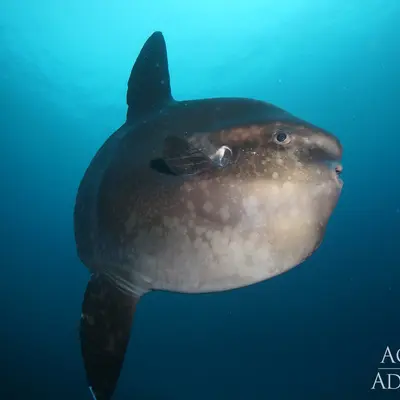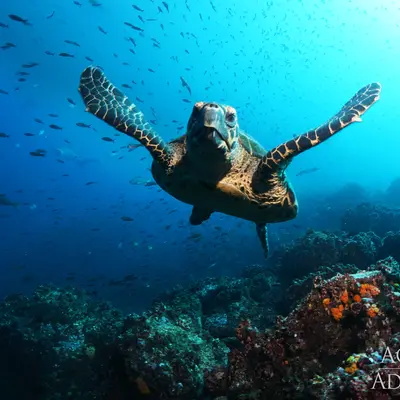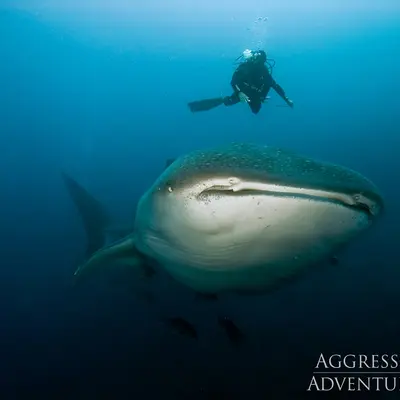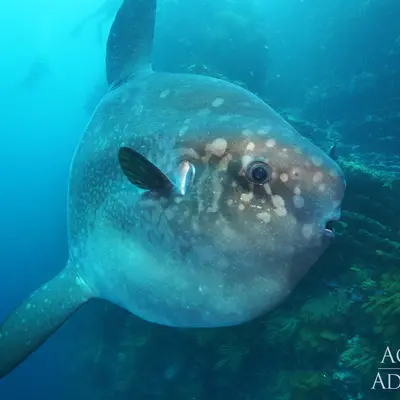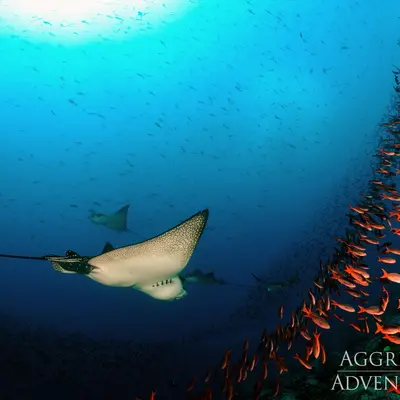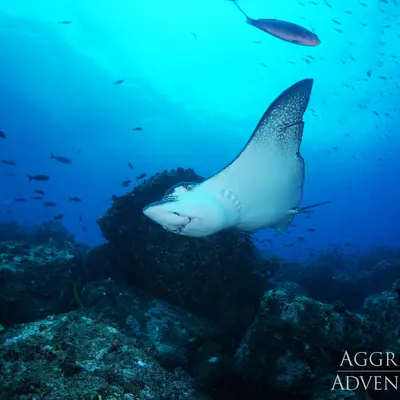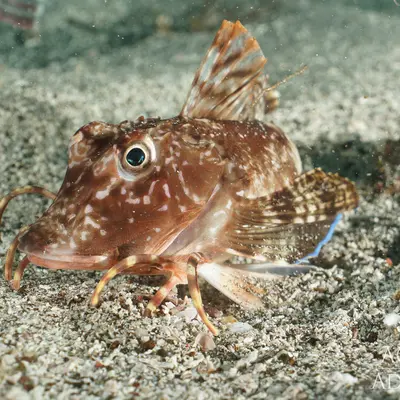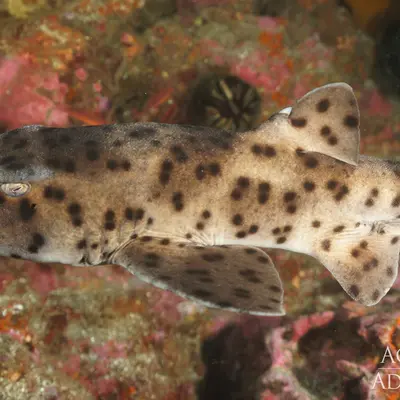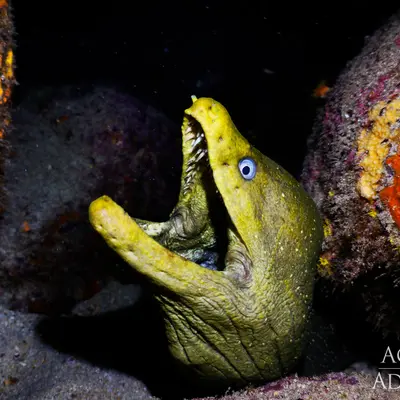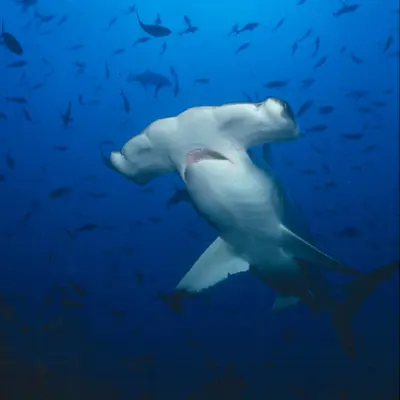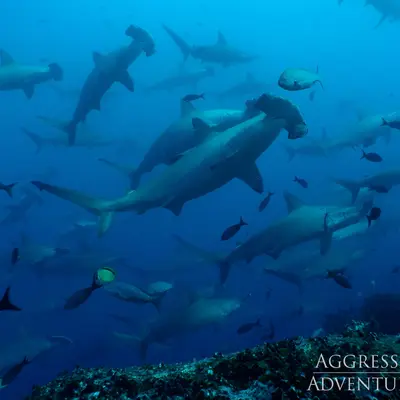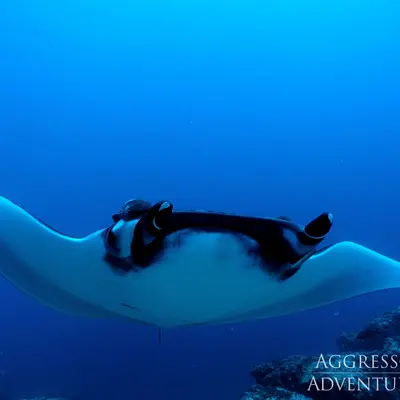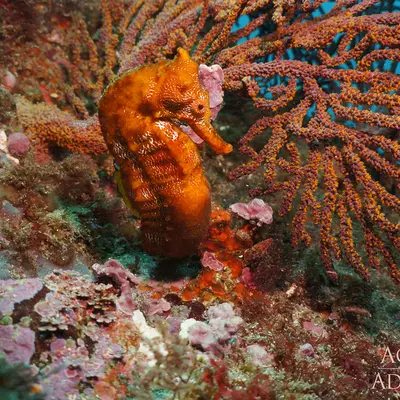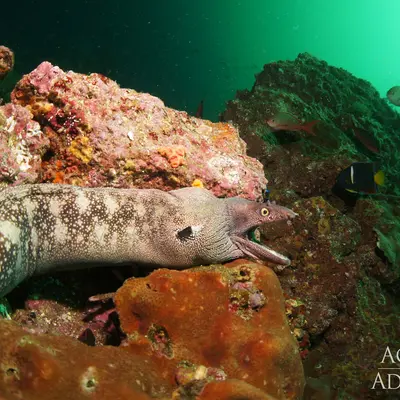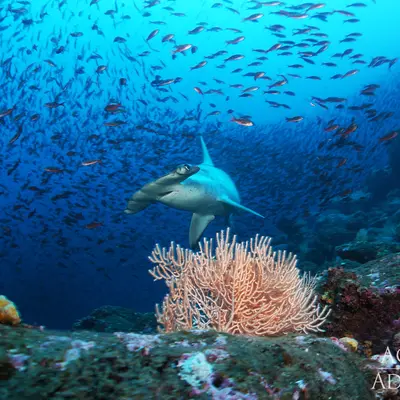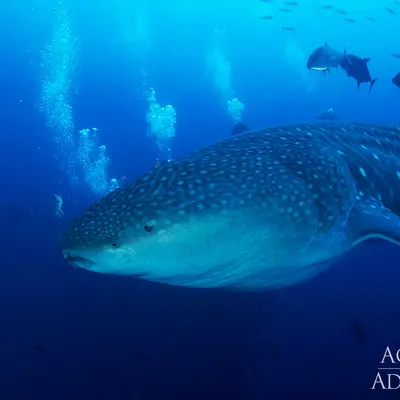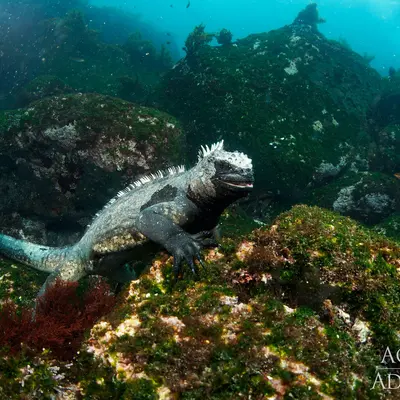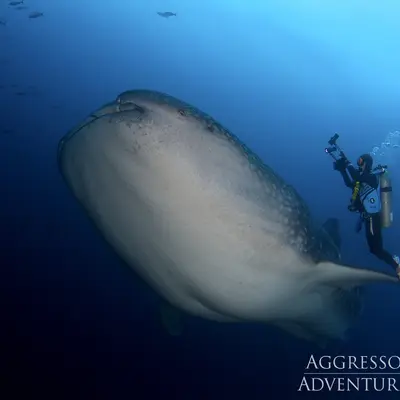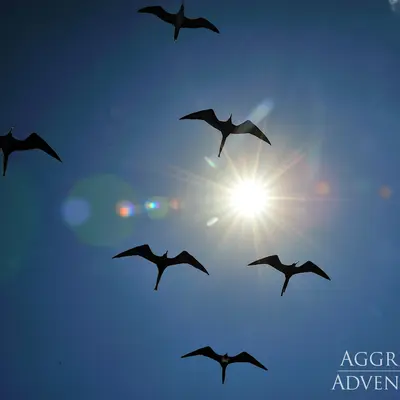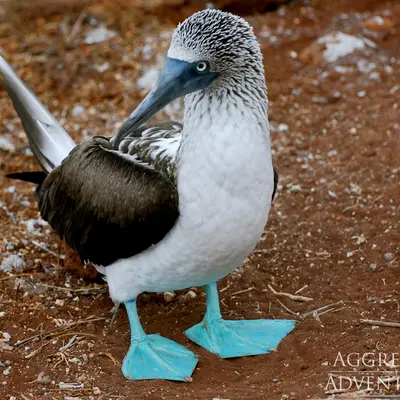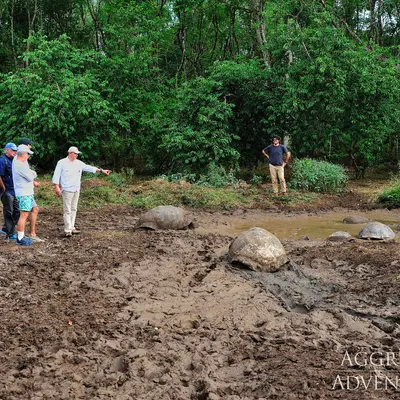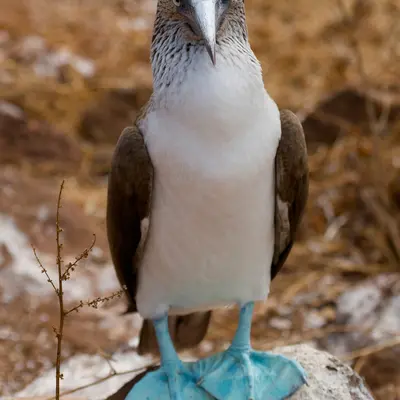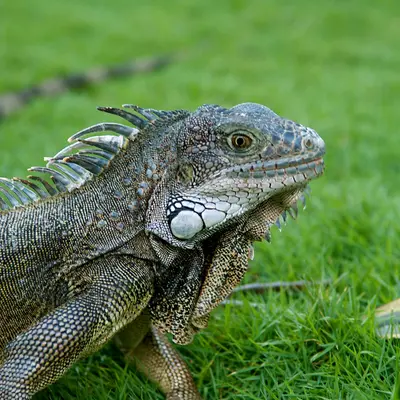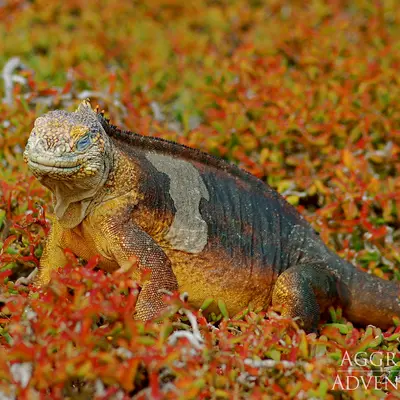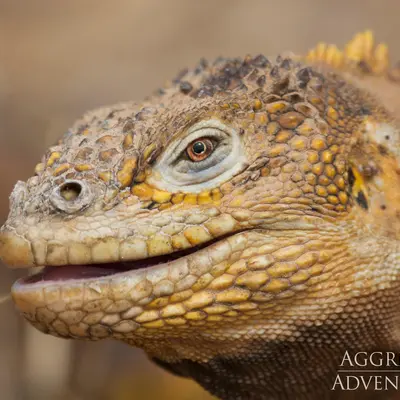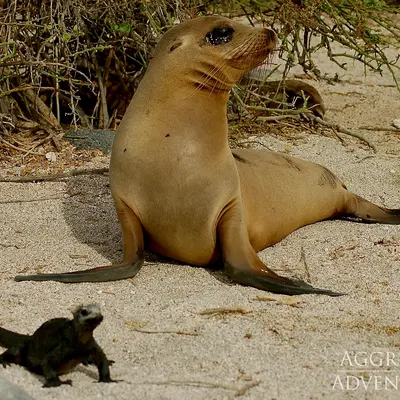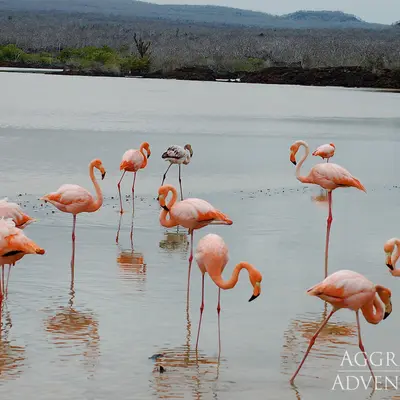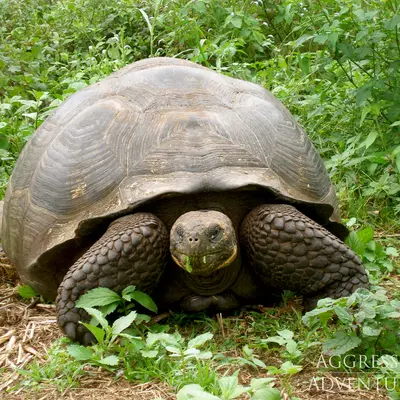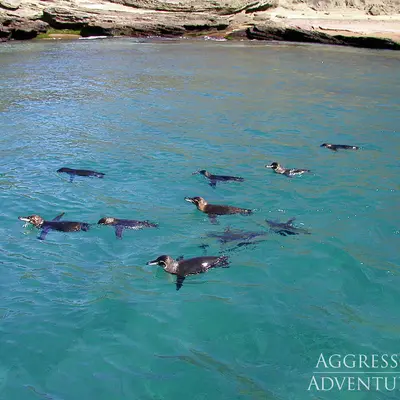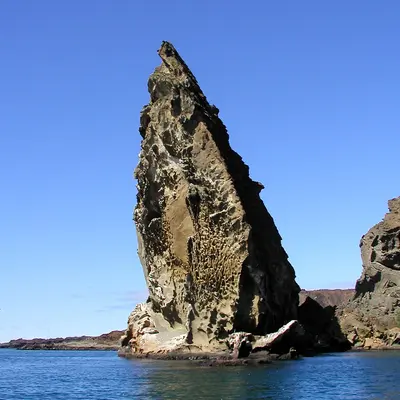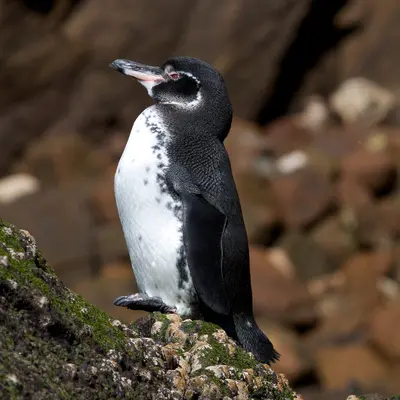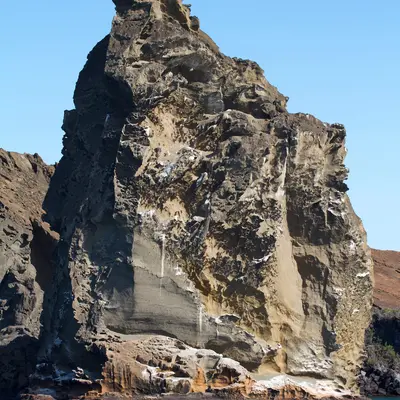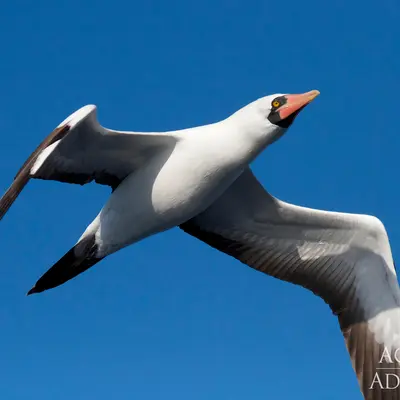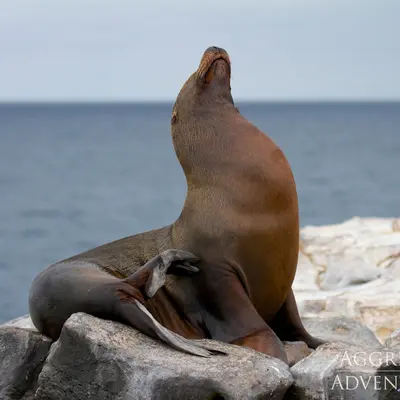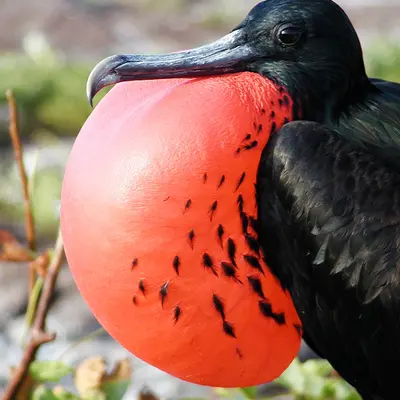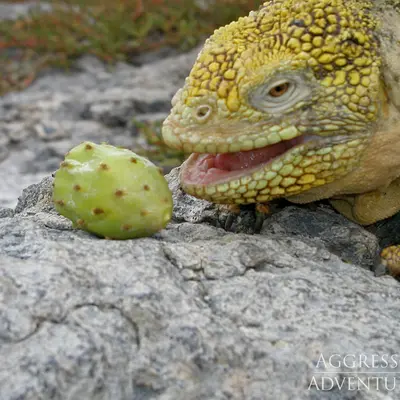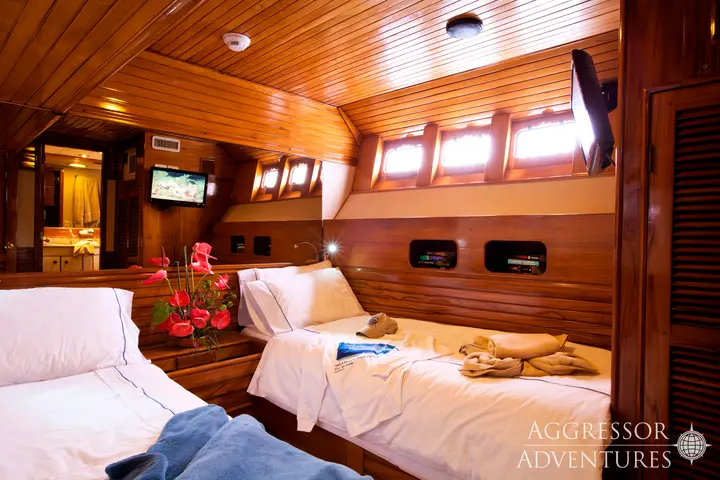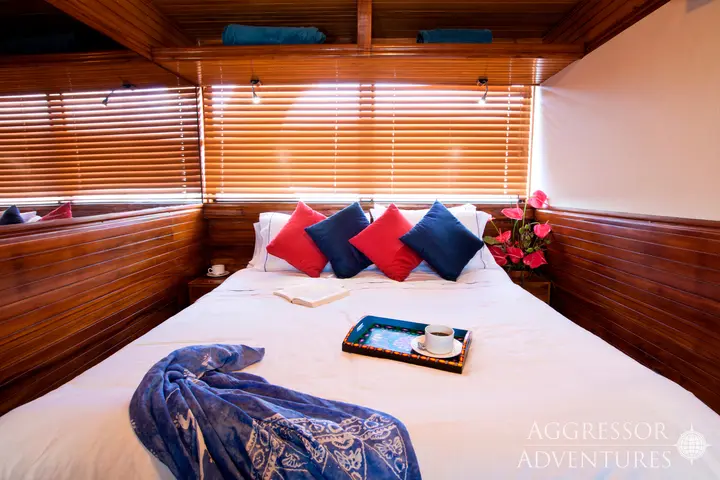The Galapagos Aggressor III is designed for comfort, stability, and safety to ensure a smooth journey around the Galapagos Islands. The 7-night itineraries depart from Baltra and visit Wolf, Darwin, Punta Carrion, Cabo Douglas, Punta Vicente Roca, and Cousins Rock. Diving at Wolf and Darwin offers incredible encounters with hammerhead sharks, playful sea lions, turtles, whale sharks, and even Mola Mola.
The spacious dive deck provides ample storage space, personal lockers, a swimming platform, air/Nitrox filling stations, rinse tanks, a three-tier camera table with low-pressure air hoses, and two warm freshwater showers. The inflatable boats make accessing and exiting dive sites easy.
This website uses Google Maps to embed map material. Please note that your personal data may be collected in the process. To view the Google Maps map, please agree that it is loaded from the Google server.
The Galapagos Aggressor III offers comfort and a high standard of service while exploring the world-renowned dive sites of the Galapagos Islands. The vessel accommodates up to 16 guests in 9 cabins. The accommodations include 4 deluxe cabins with twin beds on the lower deck and 4 master cabins with either twin or double beds on the upper deck. All cabins feature en-suite bathrooms, individually controlled air conditioning, a TV monitor with a media player, and a hairdryer. Master cabins offer ocean views with large panoramic windows.
The social areas aboard the Galapagos Aggressor III include a spacious salon and dining area where a diverse menu of American and local cuisine is served. Breakfast and lunch are buffet-style, while dinner is chef-prepared and served. The upper deck features a large shaded solarium with a hot tub, sun loungers, armchairs, a bar, and a grill.
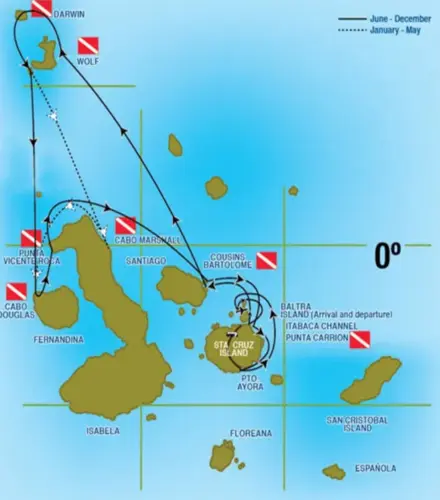
Galápagos is one of the most exciting dive travel destinations in the world.
The picturesque view of the Darwin Arch is as scenic as one can imagine.
The following dive itinerary is based on tides, currents, and weather conditions.
Day 1, Thursday: Arrival at Baltra Airport in the afternoon, followed by a warm welcome from our staff. You will then take a bus transfer to the Itabaca Channel, where you will board the vessel. A welcome and orientation dive awaits you at Punta Carrión in the Itabaca Channel.
Day 2, Friday: Two morning dives are scheduled at either Punta Carrión (Santa Cruz Island) or Bartolome Punta. In the afternoon, you can take a hike to Bartolome Summit and enjoy a panga ride at Pinnacle Rock.
Day 3, Saturday:
- January to May: Two morning dives at Darwin, followed by two afternoon dives at Wolf.
- June to December: Guests can enjoy two morning dives and two afternoon dives at Darwin.
Day 4, Sunday:
- January to May: Four dives at Wolf (two in the morning and two in the afternoon).
- June to December: Two morning dives and one afternoon dive at Wolf.
Day 5, Monday:
- January to May: Four dives at Cabo Marshall (two in the morning and one in the afternoon).
- June to December: Two morning dives at Darwin and two afternoon dives at Wolf.
Day 6, Tuesday: Two morning dives at Cabo Douglas, followed by two afternoon dives at Punta Vicente Roca.
Day 7, Wednesday: Guests begin the day with a morning dive at Cousins Rock. In the afternoon, the boat arrives at the Itabaca Channel or Puerto Ayora. After lunch, guests disembark for a private bus tour to explore the scenic highlands of Santa Cruz Island, including a visit to a tortoise reserve to see giant tortoises. Guests will also have the opportunity to explore the town, go shopping, and visit the Fausto Llerena Tortoise Breeding Center at the Charles Darwin Research Station. Dinner will be enjoyed on land at a local restaurant of their choice (this is the only meal not included in the cruise). The Galápagos Aggressor will depart from Puerto Ayora to Baltra at 10:00 PM.
Day 8, Thursday: Enjoy a hearty breakfast before checking out and departing for Baltra Airport.
The Galápagos Aggressor does not require a specific number of dives, but this destination is certainly not for beginners, as conditions can sometimes be challenging. It is recommended to have at least 50 open-water dives (not in pool conditions).
Galápagos Dive Sites
Santa Cruz Island, Punta Carrión
40 ft - 90 ft dive with white-tip sharks, stingrays, eagle rays, marble rays, scorpionfish, sea turtles, and sea lions.
Bartolome Punta
20 ft - 90 ft dive with groupers, creole fish, white-tip sharks, barracudas, scorpionfish, sea turtles, pufferfish, red-lipped batfish, reef corals, and occasional hammerheads and bottlenose dolphins.
Wolf Island
1 to 3-knot current; 40 ft - 90 ft dive with schools of hammerhead sharks, marble rays, Galápagos sharks, silky sharks, eagle rays, green turtles, octopuses, sea lions, schools of bonito tuna, yellowfin tuna, snappers, groupers, wahoos, barracudas, almaco jacks, moray eels, parrotfish, dolphins, Galápagos reef corals, sea lions, and fur seals. Occasionally, whale sharks and orcas.
Darwin Island
1 to 3-knot current; 40 ft - 90 ft dive with schools of hammerhead sharks, Galápagos sharks, silky sharks, eagle rays, green turtles, almaco jacks, snappers, groupers, wahoos, hawksbill turtles, and whale sharks. Occasionally, manta rays and orcas.
Cabo Douglas, Fernandina Island
20 ft - 90 ft dive with Galápagos penguins, marine iguanas, flightless cormorants, sea lions, seahorses, sea turtles, horn sharks, red-lipped batfish, groupers, snappers, and creole fish.
Punta Vicente Roca, Isabela Island
20 ft – 90 ft dive with Galápagos horn sharks, red-lipped batfish, stingrays, marble rays, mola mola (ocean sunfish), seahorses, Galápagos penguins, flightless cormorants, shrimp, large schools of salema, king angelfish, slipper lobsters, blue-footed boobies, frigatebirds, and brown pelicans.
Cousin Rocks
20 ft - 100 ft dive with eagle rays, jacks, sea lions, green turtles, barracudas, fur seals, king angelfish, snappers, pufferfish, groupers, marble rays, stingrays, creole fish, and black corals.
Cabo Marshall, Isabela Island (January to May itinerary)
20 ft - 100 ft dive with giant manta rays, creole fish, barracudas, white-tip reef sharks, sea lions, fur seals, yellowfin tuna, groupers, snappers, and salema.
(*) The itinerary description is provided by the boat operator.
Marine Life
Galápagos is one of the most exciting travel destinations in the world. Guests have the opportunity to dive with playful sea lions and travel to the famous Darwin and Wolf islands for thrilling dives to see hammerhead sharks, whale sharks, tuna clouds, and much more.
Sample itineraries and maps are for illustration purposes only. The exact route and visited sites may vary depending on local regulations, guest experience, weather, and logistics, and are at the captain’s discretion.
Exploring the Galápagos Islands on foot
offers a variety of land excursions where visitors can experience an impressive array of endemic species in their natural habitats. The wildlife on the Galápagos Islands is often unafraid of humans, allowing for close-up observations.
Recommended Excursion Destinations and Wildlife Observations:
Santa Cruz:
- Tortuga Bay: Known for its approximately two-and-a-half-kilometer-long sandy beach, this location offers the opportunity to observe marine iguanas in the crystal-clear waters.
Isabela:
- Sierra Negra Volcano: A hike to the rim of the world's second-largest volcano provides impressive views of the surrounding landscape.
Española:
- Observation of Blue-footed Boobies: These birds nest along the trails and are known for their striking blue feet.
North Seymour:
- Frigatebirds: Both species, the Great and the Magnificent, can be observed here during the breeding season, when males inflate their red throat pouches to attract females.
South Plaza:
-
Land Iguanas: This species of lizard is particularly abundant on this island and exhibits different forms and colors depending on the island.
-
Sally Lightfoot Crabs and Lava Lizards: These animals are typical of the island and can be observed during excursions.
Santiago (James Bay):
- Galápagos Fur Seal: These more elusive animals can be spotted in the grottos of the bay.
Note: Due to the protected status of the islands, it is prohibited to touch the animals. Nevertheless, most animals are unusually tame and can be observed up close.
During land excursions (some may require additional fees) on the Galápagos Islands, visitors can experience an impressive variety of endemic species in their natural environment. The animals are often unafraid of humans and can be observed up close.
Stateroom Twin Lower Deck
2 single beds
Adjustable air conditioning
En-suite bathroom
Max. 2 guests
Master Cabin Upper Deck
1 double or 2 single beds
Adjustable air conditioning
En-suite bathroom
Max. 2 guests
Included:
VAT, airport transfer, alcoholic beverages, soft drinks, tea & coffee, drinking water, wine with dinner, snacks, full board (all meals), diving packages, cabin towels, free toiletries.
Required Extras:
National park fees (100-200 USD per trip), visa and fees (20 USD per trip).
Optional Extras:
Travel insurance, diving insurance, tips, regional flights, rental equipment, Nitrox course, diving courses, additional dives, snorkeling set, Wi-Fi (25 USD per unit).
Rental Equipment Prices:
Rental equipment is available on this vessel. Please indicate your requirements on the booking form. Details below on what is included and additional prices.
- 15L tank: 75-120 USD
- Regulator: 60-90 USD per trip
- BCD: 60-90 USD per trip
- Fins: 50-75 USD per trip
- Mask: 50-75 USD per trip
- Nitrox tank: 100-150 USD per trip
- Snorkeling set: 50-75 USD per trip
- Flashlight: 8 USD per day
- Dive computer: 60-90 USD per trip
- U/W camera rental: 100 USD
- Full equipment set (includes: regulator, BCD, fins, mask, snorkeling set, flashlight, dive computer): 175-260 USD per trip
- Wetsuit: 50-70 USD per trip
The Galápagos Islands are a unique archipelago in the Pacific Ocean and politically belong to Ecuador. The islands are world-famous for their extraordinary biodiversity and their contribution to the theory of evolution by Charles Darwin.
Geographical Location
The Galápagos Islands are located about 1,000 km west of Ecuador, in the Pacific Ocean. The archipelago consists of 13 major islands, 6 smaller islands, and more than 40 islets.
Climate
The climate on the Galápagos Islands is tropical, but it varies by season. The islands experience two main seasons:
- The warm rainy season (from December to May) with temperatures of 26 to 30°C and occasional rainfall.
- The cooler dry season (from June to November), where temperatures range between 19 and 23°C. The cold Humboldt Current brings cooler water temperatures and influences the climate.
Population & Living Conditions
The Galápagos Islands have a small population of about 30,000 people (2021). Most residents live on the larger islands such as Santa Cruz, San Cristóbal, and Isabela. The economy is heavily tourism-dependent, but fishing and agriculture also play a role. Living conditions are generally good, but the isolation of the islands presents challenges in terms of access to goods and services.
Economy
The economy of the Galápagos Islands is primarily based on tourism, which attracts visitors due to the stunning nature and biodiversity. Every year, the islands welcome many tourists eager to experience unique animals such as Galápagos tortoises, iguanas, and albatrosses, as well as the fascinating underwater world. Another economic sector is fishing, particularly tropical fishery, and to a lesser extent, agriculture, mainly for local consumption.
Religion
The vast majority of the population on the Galápagos Islands is Catholic, as Ecuador is predominantly Catholic. There are several churches on the islands, and religious festivals and celebrations play an important role in social life.
Position in the Caribbean
Although the Galápagos Islands are not geographically part of the Caribbean, but rather in the Pacific, they are still an essential part of the tropical island world. Due to their unique biological diversity and isolated location, they are a UNESCO World Heritage Site and one of the world's most important nature reserves. The islands hold a key position in ecotourism and are a paradise for nature and diving enthusiasts.

